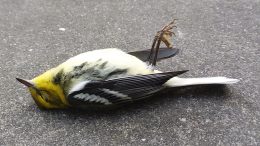The early-morning air felt cool and refreshing on my skin. I glanced above my head at a towering maple tree and saw an enthusiastic American robin, his red chest puffed out proudly as he broadcasted his joyful song over the sprawling York University campus in Toronto.
But the cheerful spring atmosphere did nothing to ease the sense of dread creeping up into my throat. My palms were already damp, and my heart raced, as I walked briskly up the pathway toward the inevitable. I strode past the back entrance of the 14-story student residence and the transparent floor-to-ceiling glass panels of the Bethune walkway came into view.
Just short of the entrance to the walkway — a walled-in pathway connecting two buildings — I stopped and carefully scanned the ground in front of me. I almost didn’t see it, but I had done this dozens of times and had developed a sharp eye. Partially obscured by the greenery carpeting the unkempt garden, a rusty-colored bird struggled helplessly beneath the glass, unable to put any weight on its legs and too dizzy to fly. The morning’s victim was a wood thrush, a threatened species in Canada.
The thrush, like so many before it, had obviously collided with the windows, causing injuries that had, at the very least, incapacitated it.
Window collisions like this are one of the top ways that humans are directly, although unintentionally, killing and injuring huge numbers of birds. And this danger is not isolated to large metropolises like Toronto. Collisions can and do happen anywhere there’s glass, and glass is everywhere. In Canada alone, an estimated 25 million birds die from window collisions each year.
Every one of these birds has a story of risky travel and perseverance that has been cut short in an instant.
As a researcher studying the migratory ecology of songbirds like the wood thrush, I knew what this bird had gone through in its annual cycle before reaching this tragic point. And I would soon learn that a solution was within reach.
The Wood Thrush’s (Final) Journey
Kneeling beside the injured thrush, I couldn’t help but imagine what that bird had endured just to make it to York University.
Only weeks earlier it would have been skulking in the undergrowth of the steamy tropical forests of eastern Nicaragua, feasting and fattening up on insects and ripe fruit. It needed this fuel for what came next: a grueling 24-hour, nonstop flight over 600 miles of unforgiving open water, the Gulf of Mexico. I imagined the faint glow of city lights 3,000 feet below during the wood thrush’s nightly marathon flights; the only sounds in the chilly air were the faint chips of thousands of other little travelers taking advantage of the cover of darkness and a good tailwind. During the 2,500-mile race to its breeding grounds, it might have faced unexpected spring storms and escaped the deadly grasp of hawks and outdoor cats. The sheer strength and determination of this small bird, battling the exhaustion of flying over 150 miles a night, left me awestruck.
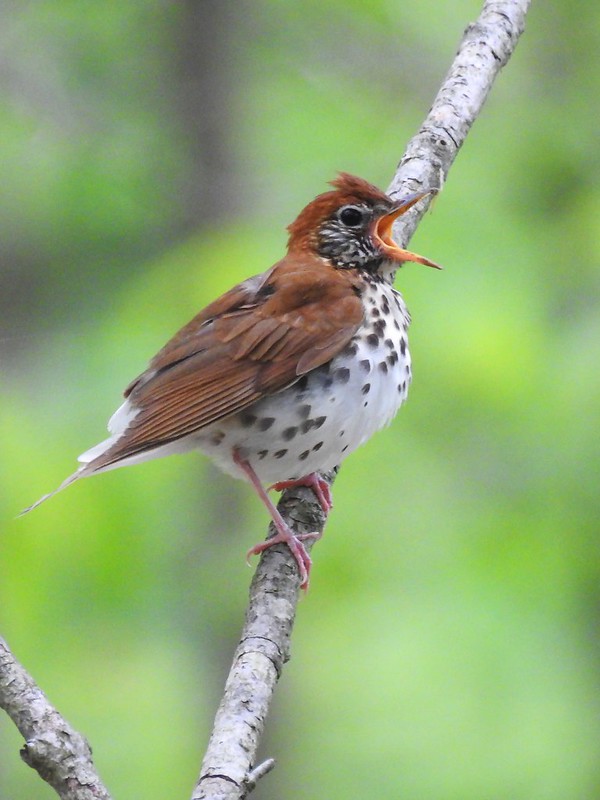
All the risk was for one more chance to raise a family on the summer bounty of food in Ontario’s deciduous forests. Instead the bird lay quivering in a dense tangle of Virginia creeper, barely able to move, its amazing journey cut short by a panel of glass.
I reached into my backpack for a “rescue pack,” a temporary transport carrier consisting of an unwaxed paper bag with a rolled-up tissue inside, sealed with a paper clip. As I gently placed my hands around the helpless bird to transfer it to the paper bag, I noticed a thick bead of blood rapidly collecting on its beak. The clock was ticking.
Ten minutes later I was in the passenger seat en route to Toronto Wildlife Centre, the wood thrush in its paper bag on my lap. My partner, a fellow bird rescuer, was at the wheel and shot me a worried glance. We had made this same harrowing trip too many times to count.
Suddenly I felt a labored shifting of weight inside the bag, and the wood thrush emitted a startlingly loud, gurgling noise. Then the movement stopped.
We rushed through the entrance of Toronto Wildlife Centre just moments later, where the veterinary technician confirmed what we already knew.
The wood thrush was dead.
A Deadly Count, a Painful Mission
This wood thrush’s tragic fate was not unique.
Every spring and fall millions of birds migrate hundreds or even thousands of miles between their southern wintering areas and northern breeding grounds. As their migration routes slowly become clogged with urban development, the small pockets of greenspace, like the woodlots at York University, can be a welcome oasis to birds in desperate search of a place to rest and refuel. Little do these travelers know that they will have to navigate a labyrinth of invisible barriers and deadly reflections, where a single mistake can be fatal.
Since coming to York University in the fall of 2018 to study migratory songbirds, I had been horrified at the sheer number of dead and injured birds I encountered on campus. Seeing the carnage firsthand drove my partner and me to head out early every morning during spring and fall migration to document the lives lost and rescue those we could.
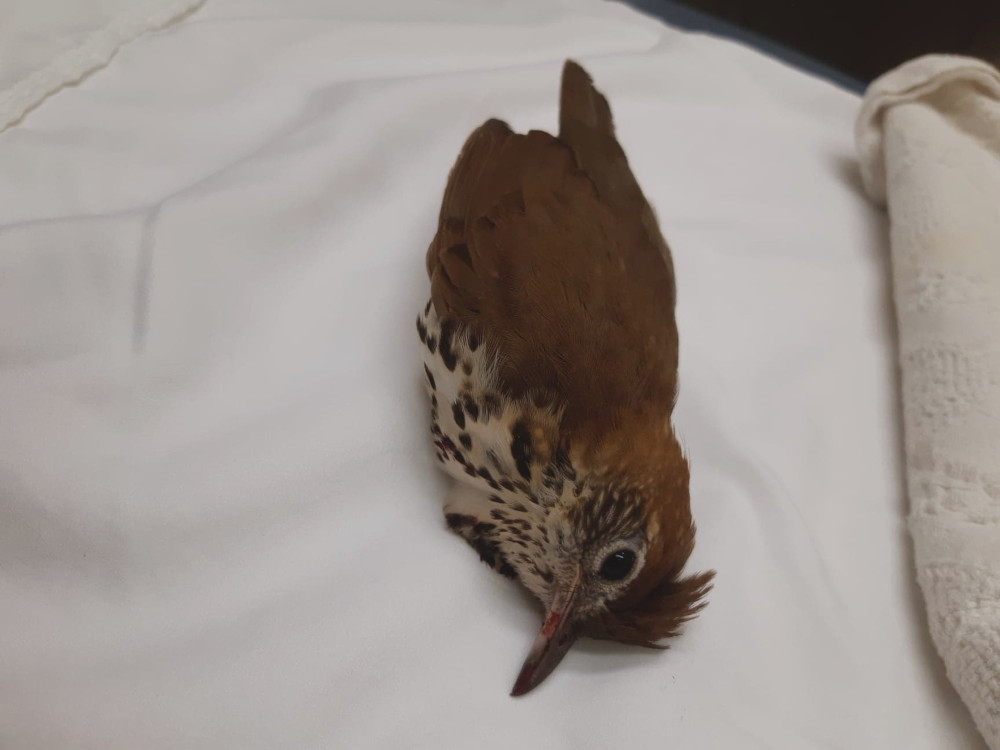
It felt as if we’d been left to pick up the pieces in the lethal aftermath of a destructive fire, but new blazes kept flaring up. Just as I was kneeling over a dead songbird to record my notes, a sharp thud beside me made me turn, where I saw yet another victim, its eyes glazing over as it took its last breath.
From the data we collected, we estimated that around 1,500 birds were killed or injured by buildings on campus every single year. As hard as we tried to rescue the survivors, many times we arrived too late.
What we needed was to prevent these “fires” from starting in the first place.
Our early morning patrols of the campus made it very clear that certain buildings and structures were deadlier than others. For example, the shrubs and fruiting plants in the secluded garden around the Bethune walkway drew birds in with the promise of a quiet, safe place to rest and refuel. Once inside the courtyard, the birds spotted new places to forage, or an escape route from predators, but they couldn’t see the large, transparent panes of glass between them and their refuge.
The layout of the walkway, combined with the large amount of glass and nearby vegetation, made it a death trap.
In contrast to many other conservation issues of our day, the solution to birds colliding with glass is quite simple. If we provide birds with visual cues that a barrier is present, they can avoid a collision. There are a variety of effective, aesthetically pleasing and economical methods already on the market to prevent birds from flying into windows.
But how could I, or anyone else, convince one of the largest universities in Canada, with countless competing priorities for funding, that this was an issue worth addressing? Does the life of a single bird matter enough to act? Do the lives of 1,500 matter? And with dozens of buildings on campus, where could York University even start in helping birds stay safe?
A Proposal — and Progress
Together with my research supervisor, renowned ornithologist Bridget Stutchbury, we offered York University a simple solution.
With the detailed records we had kept during our daily monitoring, we were able to identify which buildings, and specifically which facades of those buildings, caused the most bird deaths. If York University focused on treating these high-priority sites, we said, they could significantly reduce the number of casualties with only a modest investment. We reached out to other environmentally minded faculty and the voice to protect birds on campus quickly turned into a chorus.
The York University administration was sympathetic to our cause, yet no action was taken for months to treat the problem windows. I was heartbroken to be picking up more dead birds that could have been saved.
Then, out of the blue, the university called us in for another meeting. We went in prepared with more evidence to defend the cause. Instead we were met with the announcement that they would implement our plan.
On October 7, 2019, the Bethune walkway became a hive of activity as a group of contractors worked to cover the glass panels with a bird-friendly window treatment. Earlier that morning I’d found a tiny common yellowthroat that had been injured from a collision with these same glass panels. Unlike the wood thrush, this bird survived the trip to Toronto Wildlife Centre and was released days later to continue its journey. Now the closely spaced white dots alert birds to the presence of glass and prevent other birds from meeting the same cruel fate.
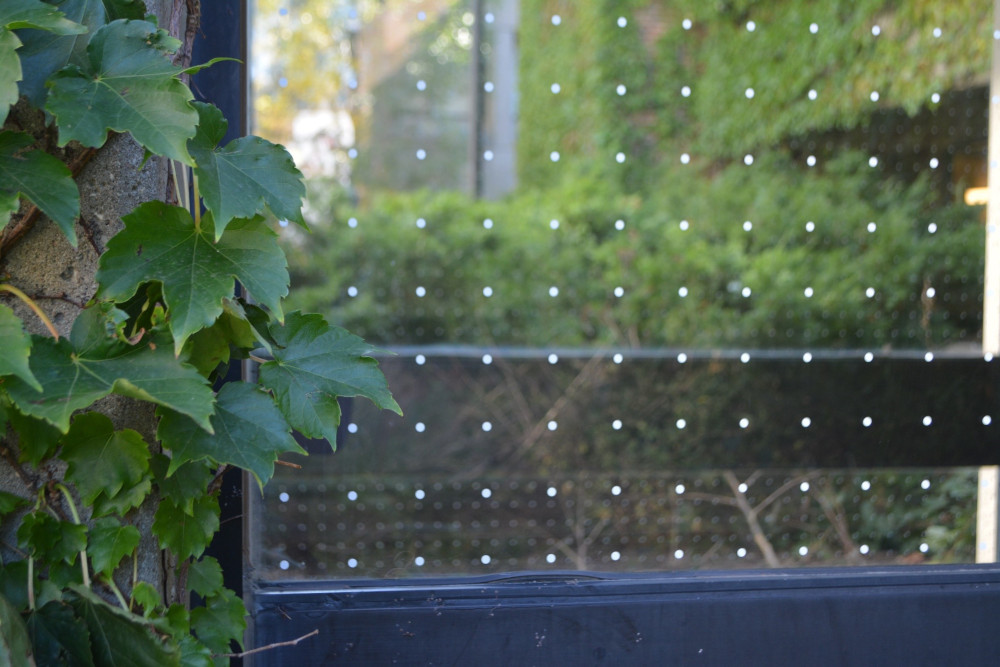
I found no more dead or injured birds at the Bethune walkway that fall.
A year has now passed since York University applied the first of several bird-friendly window treatments. Since then it has retrofitted five more high-priority locations on campus. The thousands of migratory songbirds passing through York University’s gardens and woodlots this October will have a higher chance of safely reaching their winter homes.
And other people can help them stay safe during the rest of their journey.
Make the Case for Change
Addressing the bird-collision problem in new construction — as Toronto and an increasing number of cities now require — is undoubtedly important, but we can’t forget the enormous toll of the millions of buildings already covering the landscape. Buildings like your home, your office, or the ones on your university or corporate campus.
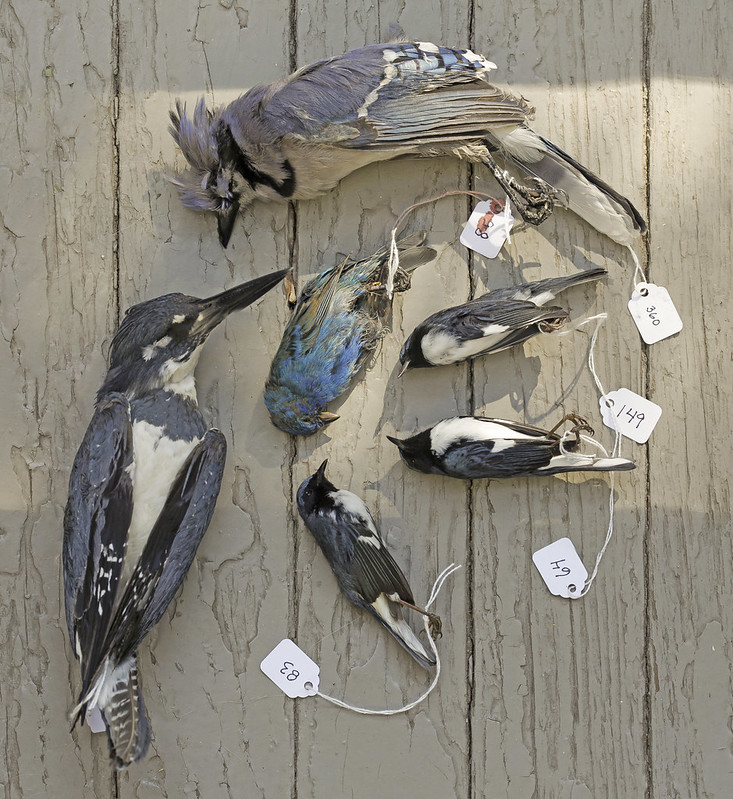
For anyone hoping to spark change in their community, collecting defensible data on bird collisions in an area is a good first step. Go out early in the day, when collisions are more frequent and before predators can snatch up injured or dead birds. Document the victims. Track where you found them so people can understand which buildings, or sides of buildings, pose the greatest risk. Work with a licensed wildlife-rehabilitation facility to give the survivors a second chance at continuing their journey. Concentrate your efforts during spring and fall, when migratory birds are passing en masse through our cities — and of course, do all of this while ensuring your personal safety.
Then put that information to use. A solid dataset, as we saw, provides fuel for effective advocacy and can help gather a coalition to support positive change. It also allows policymakers to identify the biggest bird-killers, and then to prioritize the right buildings for treatment.
My hope is that more people and institutions will follow this promising model and step up to address the deadly situations we unintentionally created decades ago, before we understood the immense effect buildings are having on bird populations. We all have a part to play in helping these amazing creatures arrive safely to their destinations.
In the meantime I’ll continue to carry around my rescue packs with me wherever I go. Because if my experience has taught me anything, it’s that you can never know when you’ll have the opportunity to save a life.
The opinions expressed above are those of the author and do not necessarily reflect those of The Revelator, the Center for Biological Diversity or their employees.
![]()
Previously in The Revelator:
Rehabilitating Injured Wildlife Taught Me to Look at Both Life and Death

